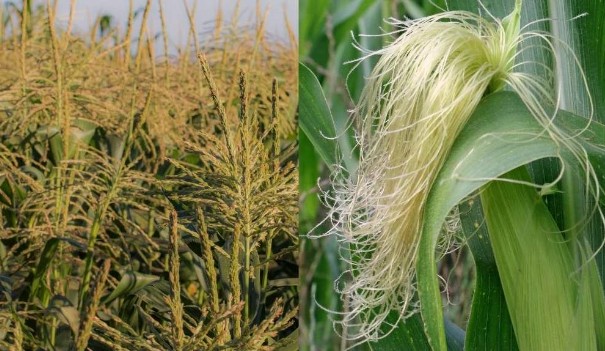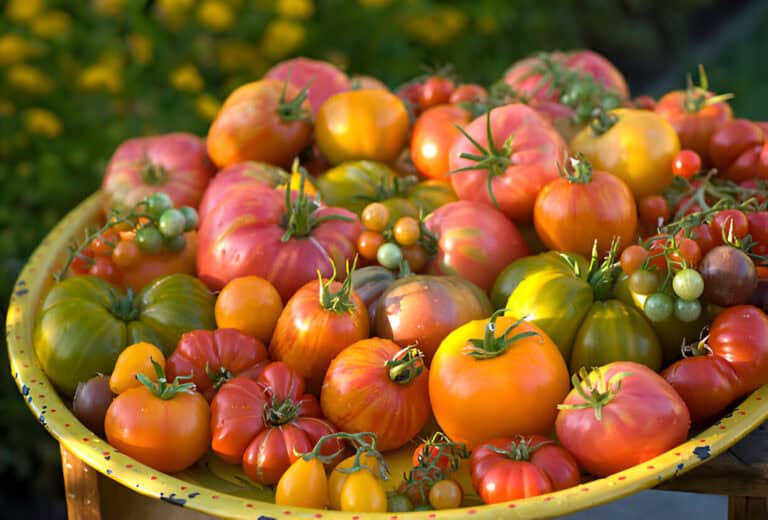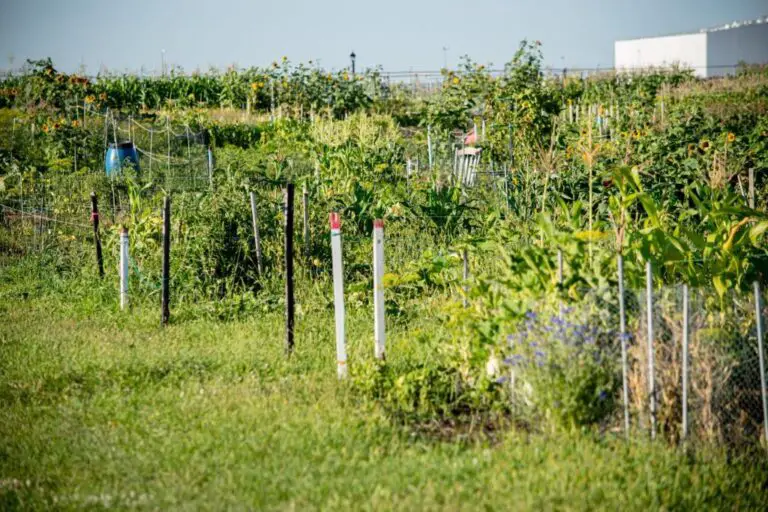How Much Soil is Needed to Grow Corn? (Depth and Spacing)

Corn is a staple crop. It has towering stalks and sweet kernels. It needs specific soil to grow and produce a big harvest. Whether you’re planting corn in a backyard garden or on a larger scale, understanding the optimal soil depth and spacing is crucial.
Have you ever wondered how much soil is necessary to successfully grow corn in your garden or container? Understanding the soil requirements for corn can significantly impact your harvest.
In this detailed guide, we’ll explore the need for soil depth and spacing. They help you grow healthy, strong corn plants.
Understanding Corn Growth Requirement
If you meet specific soil needs for corn, it will grow and flourish very well. Nutrients are crucial for corn growth. Nitrogen, phosphorus, and potassium are the main essentials. Nitrogen supports leafy growth, phosphorus aids in root development, and potassium enhances overall plant vigor. Balancing these nutrients ensures robust corn plants capable of yielding healthy ears.
Drainage is another critical factor influencing corn development. Too much water can suffocate roots and stunt growth. Poor drainage causes waterlogged conditions that hinder nutrient uptake. Good soil drains well. This is achieved through proper tilth and organic amendments. It helps roots stay healthy and take in nutrients well.
The pH level of the soil also significantly impacts corn growth. Corn thrives in slightly acidic to neutral soil, ideally within the pH range of 6.0 to 7.5. Soil pH affects nutrient availability. Deviations from the best range can lead to deficiencies. This can happen despite adequate nutrient levels in the soil. Regular soil testing and pH adjustments help corn plants access nutrients well.
| Read: Why Doesn’t Corn Need a Trellis in Your Garden? |
Soil Depth for Growing Corn

The depth of soil plays a critical role in the growth and development of corn roots, which anchor the tall stalks and support nutrient uptake. Here’s a breakdown of soil depth requirements based on different growing methods:
- In-Ground Planting:
- For planting corn directly in the ground, prepare the soil to a depth of 12-15 inches. This depth allows corn roots to go deep. They anchor the plants and get water and nutrients all season.
- Raised Beds:
- In raised bed gardening, aim for a soil depth of 12-18 inches. Raised beds provide excellent drainage and soil aeration, which are beneficial for corn root development. The deeper soil also helps maintain moisture levels, which are crucial for consistent growth.
- Container Gardening:
- When growing corn in containers, choose large containers that are at least 18 inches deep. Ensure the containers have drainage holes. This prevents waterlogging, which can stunt root growth and hurt plants.
Soil Spacing for Growing Corn
Proper spacing between corn plants ensures they have enough room to grow and receive adequate sunlight and nutrients. Here’s how to space your corn plants effectively:
- Row Spacing:
- Plant corn seeds or seedlings in rows spaced 30-36 inches apart. This spacing allows ample room for the corn plants to develop large, sturdy stalks and multiple ears of corn per plant.
- Intra-row Spacing:
- Space corn seeds or seedlings 8-12 inches apart within each row. Adequate spacing within rows reduces competition among plants. They compete for sunlight, water, and nutrients. This promotes optimal growth and yield.
- Hill Planting:
- Alternatively, plant corn in hills or clusters with 4-5 seeds per hill, spaced 12-15 inches apart. Once the corn plants reach 4-6 inches tall, thin them to the strongest 2-3 plants per hill to maximize yield.
Soil Preparation Tips for Growing Corn
Before planting corn, preparing the soil properly sets the stage for healthy growth and robust yields. Follow these soil preparation tips:
- Till the Soil: Use a garden tiller or shovel to till the soil to the recommended depth, breaking up clumps and creating a loose, friable seedbed. Well-tilled soil promotes root penetration and ensures good soil-to-seed contact for germination.
- Add Organic Matter: Incorporate compost, aged manure, or other organic amendments into the soil to improve fertility, structure, and water retention. Organic matter also enhances soil microbial activity, which aids in nutrient cycling and availability for corn plants.
- Check Soil pH: Corn thrives in slightly acidic to neutral soil with a pH range of 6.0-7.5. Test your soil pH and amend it if necessary, using lime to raise pH or elemental sulfur to lower pH, ensuring optimal nutrient uptake by corn plants.
| Read: Feeding Corn Silage to Beef Cows: What Are the Benefits? |
To ensure your corn plants thrive and make lots of high-quality ears, use these maintenance tips. Use them all season long.
- Watering: Provide corn plants with consistent moisture, especially during pollination and ear development stages. Water deeply to encourage deep root growth and prevent shallow root systems.
- Fertilization: Apply a balanced fertilizer or one formulated specifically for corn to promote healthy growth and high yields. Follow fertilizer application rates based on soil test recommendations and crop nutrient requirements.
- Weed Control: Keep corn fields or garden beds free of weeds that compete with corn plants for nutrients, water, and sunlight. Use mulch or cultivate shallowly around corn plants to suppress weed growth without damaging roots.
- Pest and Disease Management: Monitor corn plants regularly for signs of pests and diseases, such as corn earworms, aphids, or fungal infections. Use integrated pest management. This includes cultural and biological controls. It minimizes damage and protects yield.
Troubleshooting Soil-related Issues in Corn Cultivation
Corn cultivation can be fraught with challenges related to soil health, which directly impacts growth and yield. Nutrient deficiencies or excesses are common issues that affect corn plants. For instance, lack of nitrogen causes yellowing lower leaves and stunted growth. Excess nitrogen leads to too much vegetative growth, at the expense of ear development. Fixing nutrient imbalances requires soil testing. It is to find deficiencies and adjust fertilizers to support balanced growth.
Poor soil conditions pose another hurdle for successful corn cultivation. Compacted soil restricts root growth. It leads to shallow roots that struggle to access nutrients and water. Adding organic matter, such as compost, improves soil. It promotes better aeration and drainage, which are crucial for root health. Additionally, addressing pH imbalance is vital; corn thrives in slightly acidic to neutral soil with a pH range of 6.0 to 7.5. Adjusting soil pH with amendments ensures optimal nutrient availability for corn plants.
Recognizing symptoms of soil-related concerns early is key to preventing crop losses. Symptoms such as wilting, yellowing leaves, and uneven growth show soil issues. They need immediate attention. Tailor soil improvement strategies to these symptoms. They help reduce problems and foster healthier corn plants. The plants can produce robust ears.
Corn Harvesting Tips
- Timing: Harvest corn when the ears are fully mature and the kernels are plump and juicy. Check for readiness by piercing a kernel with your thumbnail; if a milky liquid squirts out, the corn is ripe for harvest.
- Storage: Eat fresh corn immediately after harvest for the best flavor and texture. If storing, refrigerate ears promptly, or blanch and freeze kernels for long-term storage.
Conclusion
Success growing corn depends on giving the right soil depth, spacing, and prep. They support strong growth and good yields. Follow the guidelines in this guide. They will help you grow healthy, thriving corn plants in your garden or field. You’ll enjoy the joy of harvesting sweet, delicious ears of corn from your own backyard. Happy planting!






